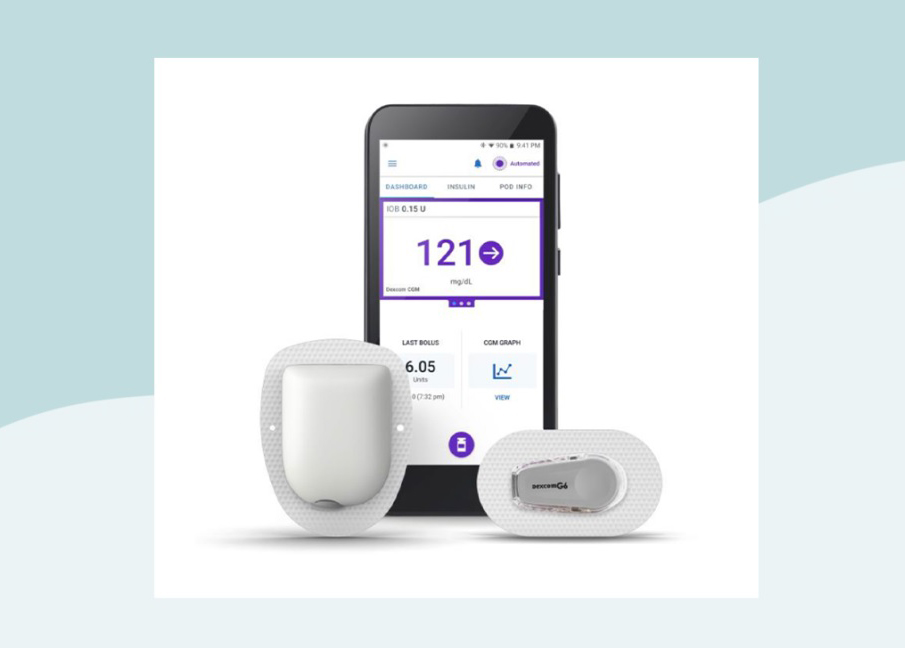
With over 30 million people living with type two diabetes in the United States, no automated insulin delivery (AID) systems are currently FDA-cleared for use in this population. Insulet Corporation, however, has tasked itself with changing that.
The company, which has already dipped its toes into type two diabetes care with its FDA-cleared basal-only pod called Omnipod GO and had studies underway for years evaluating the Omnipod 5 for type two, recently shared positive results from its Secure-T2D pivotal trial evaluating the impact of using the Omnipod 5 Automated insulin delivery system in patients with type two diabetes who require insulin.

The trial, which represented 305 participants from 21 US sites — including 24% Black and 22% Hispanic participants — started by continuing individual standard therapies for the first 14 days. After that time, the participants used the Omnipod 5 AID for 13 weeks and could eat and exercise without restrictions. They were also given the option to bolus for blood glucose corrections only, for actual carbohydrate intake, or for a set carbohydrate regimen.
“More than half (55%) [of the participants] were on a stable dose of GLP-1 receptor agonists, and 73% used multiple daily injections of insulin, while 21% used basal-only insulin at baseline, and only 5.6% used an insulin pump at baseline,” according to Insulet.
The primary objective, according to the company, was to evaluate change in HbA1c with Omnipod 5 in adults aged 18 to 75 years living with type two diabetes with a current insulin regimen for at least three months.
“Other criteria included a baseline HbA1c between 7% and 12% for those using basal insulin only, and 12% or less for those using basal and bolus or pre-mixed insulin,” according to the company press release announcing the study results. “Secondary objectives included demonstrating improvements in time in range, and time in hyperglycemia, as well as demonstrating non-inferiority for hypoglycemia. Additionally assessed as a secondary objective was diabetes distress, a patient-reported outcome.”
Results from the study showed glycemic improvements when study participants used Omnipod 5 compared to treatment with injection or pump therapy for type two diabetes, including significant reductions in HbA1c, time in hyperglycemia, and total daily insulin dose. Additionally, individuals saw improvement in time in range without increasing time in hypoglycemia, and a clinically meaningful improvement in diabetes distress.
“Our findings demonstrate substantial improvements in blood glucose outcomes and overall quality of life, highlighting the potential for this innovative technology to transform type two diabetes management with automated insulin delivery,” said Francisco Pasquel, MD, MPH of Emory University and chair of the study, in the release.
Insulet reported no instances of diabetic ketoacidosis or hyperosmolar hyperglycemia syndrome in the study, one occurrence of severe hypoglycemia during treatment that was deemed to be unrelated to trial device malfunction, and an additional 13 serious adverse events not related to glycemia or the trial device.
The company has submitted the study results to FDA with hopes to expand Omnipod 5’s indications for use to those with type two diabetes. The device is already approved for use in multiple countries, including the US. If expanded use is approved by the agency, Insulet said it expects to launch to the type two diabetes population in the US in early 2025.
Researchers for Zacks highlighted the potential industry impact of expanded Omnipod 5 use in a recent report, writing that since the global market for type two diabetes was valued at $32 billion in 2022 and is expected to “witness a CAGR of 8.2% by 2023,” the introduction of new “therapeutic compounds with improved efficacy and safety opens up the possibility of developing new treatments. Also, the growing obesity epidemic in many regions of the world is supporting the profitability of the industry.”

